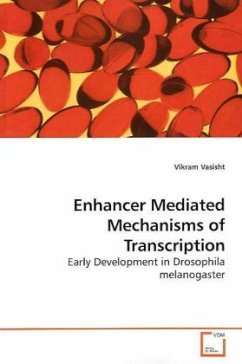During development of all multicellular animals, specific genes are differentially expressed with respect to position and time. This differential expression establishes anterior-posterior (A-P) and dorsal-ventral (D-V) polarity and leads to the specification of different cell fates in different positions within the body plan. In Drosophila, a cascade of genetic interactions controls the pattern along the A-P axis. The pair-rule gene even-skipped (eve) which is expressed in a seven stripe periodic pattern in the early embryo, plays a critical role in this process. The eve locus has distinct regulatory regions (enhancers) that drive expression of individual stripes or pairs of stripes. These enhancers are regulated by transcription factors encoded by genes that act earlier in development. Two enhancers (eve 2 and eve 3&7) have been well characterized in previous studies that identified activator proteins and repressors that form the borders of the stripes. This publication describes the further characterization of the cis-elements that control activation and repression of these enhancers.
Bitte wählen Sie Ihr Anliegen aus.
Rechnungen
Retourenschein anfordern
Bestellstatus
Storno








